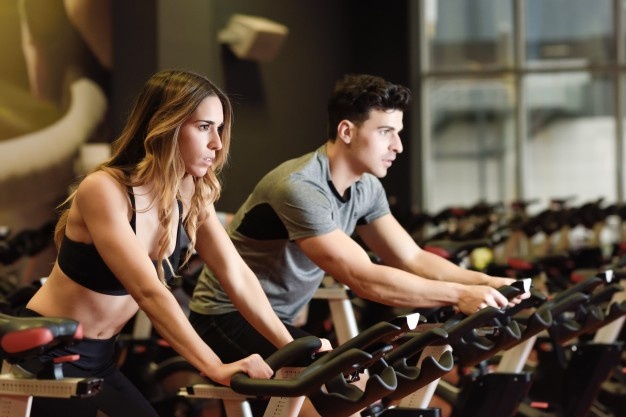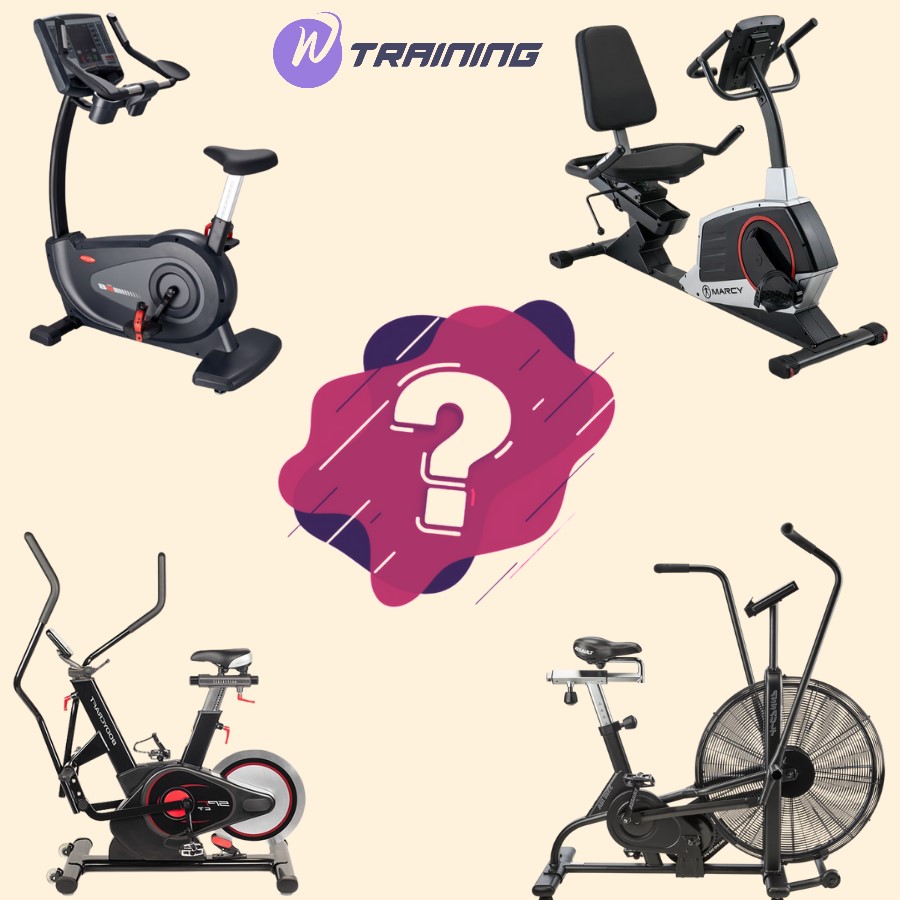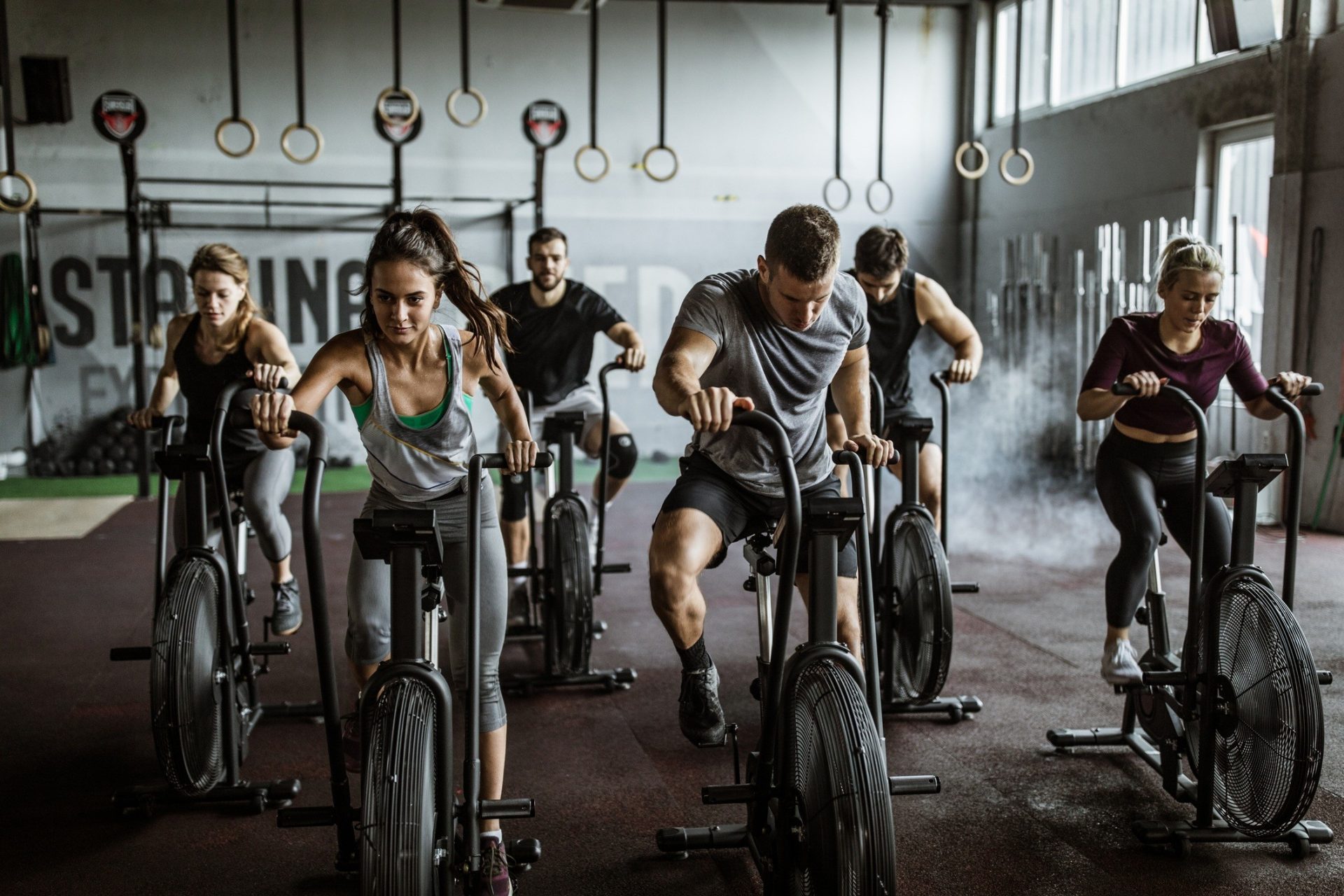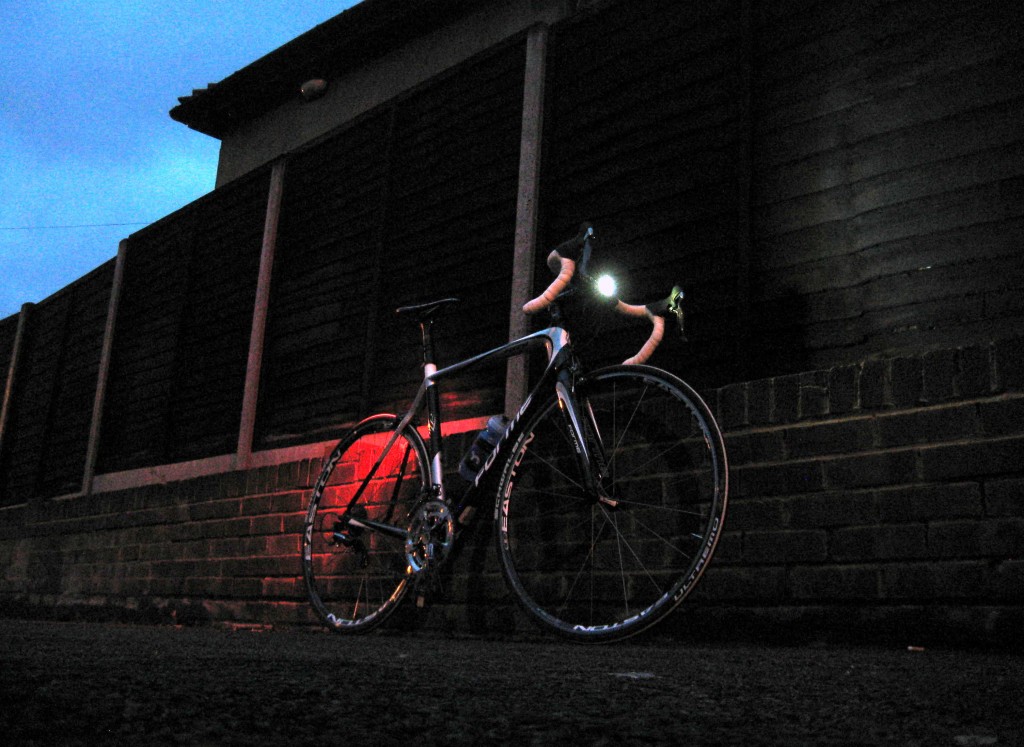Indoor cycling is an effective activity that allows individuals to clearly observe the before and after the change. It’s a low-impact activity, but it has a significant influence on your body and health, and it will make others exclaim “wow” after a time.
Low-impact activities
Low impact exercise is exactly what the term implies: exercise that is gentle on the joints and body when compared to other routines. The term “low impact” does not imply “low intensity.” Low-impact exercise may provide a high level of intensity.
Low-impact activities are ideal for people who are new to exercising. These are also great for sportsmen who are on the mend after an injury.
Cycling is a low-impact activity
Cycling is a low-impact sport that demands smooth, synchronized actions. So that there’s no jerking, twisting, or pounding going on. Movements and impacts on joints are mild, regular, and cause little wear and tear. That’s why cycling is gentler on your joints and muscles than most other sports.
Does Indoor Cycling Really Work?
-
Type of indoor cycling working-out
Studio Indoor cycling working-out
People prefer to practice in studios. An instructor will take the class through various sorts of riding, such as uphill climbs, bursts of speed, and brief intervals of relaxed pedaling. You’ll occasionally get off of the seat and pedal while standing.
Also, everyone in the class has their own bike. They generally all face the same way, either toward the teacher or a mirror.
The instructor selects music to accompany each step of the lesson. They could play a catchy tune for 5 minutes as you cycle as quickly as you can. They could then play a slower song as you regain your breath and cycle gently. You may cycle for 5 minutes with a lot of resistance to simulate going up a large hill while listening to music that fits the atmosphere.
Some teachers may use imagery to keep you motivated. You’ll envision yourself speeding down a desert straightaway or gradually climbing a green mountain on a Caribbean paradise. It’s a fantastic method to avoid boredom.
Home indoor cycling training
Meanwhile, other people prefer to exercise at home. Although they will have to pay a significant amount of money to purchase equipment, locate a suitable location for exercise, and will no longer have access to teachers or friends as they had in the studio, they will be able to design their own practice schedule or employ an individual instructor.
-
Benefits of indoor cycling training
In this part, we will find out all the benefits of indoor cycling on your physical and mental health.
Improve better health
- Reduce the risk of a heart attack
- Reduce blood pressure, lower blood sugar levels, and increase blood flow
- The immune system has improved.
- More energy
- Better mental health: better mood and sleep, decrease stress levels,…
- cancer prevention: There is lots of evidence that any exercise can help prevent cancer, but some studies have found that cycling is especially beneficial for maintaining your cells in excellent functioning order.
A long-term study conducted by a Finnish study found that males who exercised at a moderate level for at least 30 minutes each day were half as likely as those who did not. Besides, other studies have indicated that women who cycle often had a 34% lower chance of developing breast cancer.
Weight loss
Indoor cycling classes are an excellent method to lose weight. You can burn 400 to 600 calories every session depending on the effort and duration of the lesson. To observe weight reduction benefits, you must attend sessions 3-6 times a week.
A 2018 study discovered that indoor cycling and strength training was sufficient to improve endurance and strength without changing eating patterns.
Clearly, it’s still a good idea to eat a balanced diet rich in carbs and protein. Indoor cycling combined with a low-calorie diet was proven to aid weight loss and enhance HDL cholesterol levels in a 2010 research.
Build muscles
Building muscular strength and endurance is a major aim of any exercise regimen, and it is one of the most significant indoor cycling advantages. Cycling primarily works the gluteus and leg muscles. You will rise and descend into the saddle of your bike as your indoor riding workout replicates various outside terrains. Moreover, you will strengthen the gluteus and hamstring muscles while sitting. In the standing posture, as you raise to mimic climbing a hill, you will strengthen the quadriceps and gluteus muscles. Your arms and core muscles will be worked to some level as well since they will aid to maintain you centered over your bike during these actions. The bones, tendons, and ligaments that surround these muscles will be strengthened as well.
See also: Strengthen Cycling Quads – A Simple Way To Build Leg Muscles
Safer than outdoor cycling
Outdoor riding may be a fantastic way to get some exercise, but there are certain hazards to consider, including inattentive drivers, uneven or slippery road conditions, and poor visibility. Also, whether the weather is hot and humid, or cold and wet, it might be tough to find the motivation to go outside. It may even be dangerous to do so.
You don’t have to worry about traffic, road conditions, or the elements while you ride indoors. You may work out safely at any time of year if the temperature is acceptable.
Part of bodies (muscles) work when cycling
- Core: Use your core to stabilize your body throughout the session, which aids with general balance, particularly when standing.
- The upper body. Support yourself on the bike by using your upper body. Upper-body workouts using dumbbells or resistance bands are included in certain classes.
- Back: Throughout the session, you can maintain a strong, stable spine, which will assist to develop and tone your back muscles.
- Glutes: Feel your glutes contract with each pump, especially when you stand up, do an incline, or increase the resistance.
- Quadriceps: As you bike and climb hills, your quadriceps will be the primary muscles engaged, resulting in strong, toned legs.
- Hamstrings: Cycling helps to strengthen and release your hamstrings, which aid to raise the pedal and support your joints with each cycle.
- Lower legs: With each cycle, you’ll work your calves, which will assist preserve your ankles and feet when cycling and during regular activities.
Type of stationary bikes
Stationary bikes are classified into three types: upright, recumbent, and dual-action. Each one has somewhat different advantages.
Depending on your fitness level, joint health, and workout goals, you may focus on just one bike or try them all at various times for additional variation.
Upright bike
The upright bike is one of the most common forms of stationary bike. It’s comparable to riding a conventional bicycle, only the pedals are located beneath your body.
Obviously, the upright bike is a terrific cardio workout that also works to improve your leg and core muscles. This bike may be used standing or seated, depending on your inclination.
On the other hand, the disadvantage of this bike is that the upright posture puts strain on your hands and wrists. In addition, the tiny seat might be unpleasant, particularly during extended exercises.
Recumbent bike
A recumbent stationary bike allows you to sit in a comfortably reclined posture on a bigger seat set back from the pedals. This style of bike is gentler on your upper body, joints, and lower back. Because your body is fully supported, your workout may be less strenuous. You’ll also feel less tired and sore after your workout.
If you have restricted mobility, joint difficulties or injuries, or back pain, a recumbent bicycle is a suitable choice. In addition, it’s a more secure alternative for older adults or those who are new to fitness.
Dual-action bike
A dual-action bike resembles a conventional road bicycle the least. It features handlebars that move back and forth to target the muscles in your upper body. So, in addition to cycling and working your legs, you may also get a good upper body workout.
Other types of bikes
The most common alternative in indoor cycling courses is the indoor cycle bike, which is comparable to an upright bike. However, it has a raised seat.
Another distinction is that resistance is generated by a weighted flywheel on the front, which generally weighs around 40 pounds. The resistance may be changed to mimic riding uphill or into the wind. A fan or air bike is a less common form of stationary bike. There are no preprogrammed options on this bike. Rather, you generate resistance by pedaling. The faster you pedal, the faster the wheel blades revolve, generating greater resistance. In general, these bikes are less costly than other forms of stationary bicycles.
Plans working-out for different levels
For beginners
1. If you’re just starting out, the idea is to start softly and gradually add more time and intensity.
2. Begin with a 25- to 35-minute workout and progress from there, adding time in 1-minute increments as your fitness improves.
3. Here is an example of a beginner’s workout:
4. Begin by cycling for 5-10 minutes at a low effort.
5. Switch to medium intensity for 5 minutes, followed by:
- High intensity for 1-2 minutes
- Medium intensity for 5 minutes
- High intensity for 1-2 minutes
- Medium intensity for 5 minutes
6. Finish with 5 minutes of low-intensity cycling.
For weight loss
This kind of activity helps to burn calories and body fat and maybe a useful addition to a weight loss plan. It’s also a fantastic choice if you want to fast change your resistance levels.
Here is an example of a weight reduction workout plan:
- Begin by cycling for 5-10 minutes at a low effort.
- For 3-5 minutes, reduce the intensity to medium.
- For the following 20 to 30 minutes, alternate between high intensity (1-3 minutes) and medium intensity (3-5 minutes).
- Cooldown by cycling for 5-10 minutes at a low effort.
For interval training
1. Interval training can help you increase your strength and stamina once you’ve built up your fitness.
2. Here’s an example of an interval training program:
3. Begin by cycling for 10 minutes at a low effort.
4. Switch to medium intensity for 10 minutes, followed by:
- High intensity for 2 minutes
- Low intensity for 2 minutes
- High intensity for 2 minutes
- Low intensity for 2 minutes
- High intensity for 2 minutes
5. Cool down by cycling slowly for 5-10 minutes.
So that, you may gradually increase your intervals by one minute at a time.
Setting up a trainer bike
-
Always set up from the back to the front.
The seat should be adjusted first, followed by the handlebars.
-
Use your hips as a guide
The seat should be around hip height. Place yourself directly near to the saddle. To obtain a sense of where the seat should be, place your hands on your high hip bones and/or elevate your knee to hip height.
-
Try sitting on the bike
Insert your foot/pedal into the pedals and bring it to the bottom of the pedal stroke. A reasonably complete extension with a small, gentle bend at the knee is ideal. If you hyperextend your knee (a.k.a. lock your knee) or feel like you’re reaching for the pedals, it’s time to lower the seat. In contrast, if your knee is excessively bent and you are not achieving complete extension, you should raise the seat higher.
-
Find the power position
The position of the seat is controlled by the angle of your knees and where they fall over the pedals. Your knees should be above the ball of your foot. In order that, let begin by putting the saddle in a neutral position. Then, get into riding posture (hips back, neutral – not rounded or hyperextended – back) and place one pedal exactly in front of the other so that the bike’s cranks are even.
Check to observe where the knee is on whichever foot is in front. Slide the seat back if the knee is too far forward over the toes. Slid forward if the knee is at a 90-degree angle and falls over or behind the ankle.
-
Raise the bar
Handlebars are fairly arbitrary. An enthusiastic outdoor cyclist may like the handlebars to be very low, but most indoor riders prefer the bar to be at seat height or higher. So, if you have back problems, you should raise the handlebars a little higher.
-
Last checks before getting started
On certain motorcycles, the handlebars also swivel back and forth… Begin in a neutral stance once more. Riders should be able to comfortably hold handlebars without reaching for them, with their shoulders pulled back away from their ears and their elbows bent softly. Always maintain a gentle hold on the bars and allow your legs to bear the majority of your body weight. Check that your knees do not strike or come dangerously near to the bar.
And you’re all set! Use the warmup to get more at ease riding your bike. If any last-minute changes are required, they can be done before the ride begins. It should be noted that beginning riders should still seek guidance from an instructor or the personnel of a cycling studio. Don’t be scared to seek assistance.
Finally, indoor cycling is an excellent workout for body change. It has an effect on the entire body and causes it to alter physically. In the midst of the COVID-19 pandemic, home indoor cycling is an excellent way to enhance not only your health but also your mind. It is unquestionably a sport that they cannot afford to overlook, particularly in terms of weight reduction demand.
Read more:
Best Cycling Apps For Smart Trainers: Which Should You Install?








